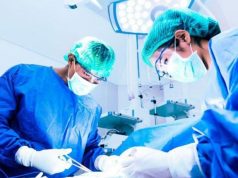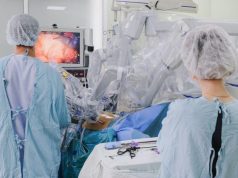In restricted sample using propensity score adjustment, significant association only seen for serrated polyps
By Elana Gotkine HealthDay Reporter
THURSDAY, April 18, 2024 (HealthDay News) — Propofol sedation during colonoscopy seems to be associated with improved detection of serrated polyps, according to a study published online April 17 in Anesthesiology.
Aurora N. Quaye, M.D., from Maine Medical Center in Portland, and colleagues conducted a retrospective cohort study using observational data for patients aged older than 50 years with screening or surveillance colonoscopies between Jan. 1, 2015, and Feb. 28, 2020. The differences in polyp detection between propofol and moderate sedation were examined in the full sample (54,063 colonoscopies). In a restricted sample that included endoscopists and facilities with between 5 and 95 percent propofol sedation use (18,998 coloscopies), propensity score adjustment and clustering at the endoscopist level were used.
The researchers found that the prevalence of serrated polyps was significantly higher using propofol than moderate sedation in the full sample (34.0 versus 24.5 percent) and in the restricted sample (30.3 versus 25.7 percent). Propofol was associated with higher neoplasm, adenoma, and serrated polyp detection in the full-sample multivariate logistic regression (adjusted odds ratios, 1.25, 1.07, and 1.51, respectively). An attenuated but statistically significant effect size was seen for serrated polyps (odds ratio, 1.13), but not for adenomas or any neoplastic lesion in the restricted sample using inverse probability of treatment-weighted propensity score adjustment and clustering at the endoscopist level.
“It may be that propofol increases patient comfort and relaxation, optimizing detection of polyps that are more difficult to see,” Quaye said in a statement. “Additionally, propofol may cause smooth muscle relaxation in the colon, allowing more careful inspection and improved visualization.”
Copyright © 2024 HealthDay. All rights reserved.








